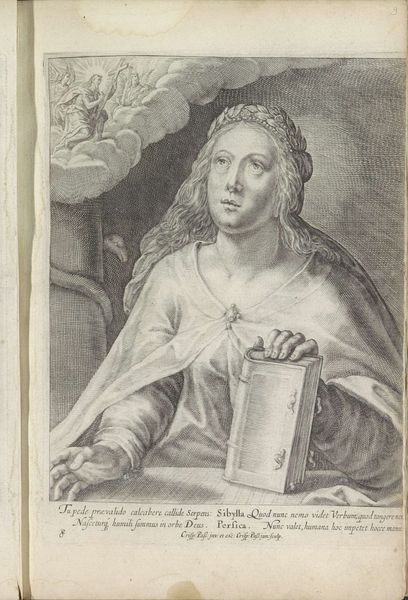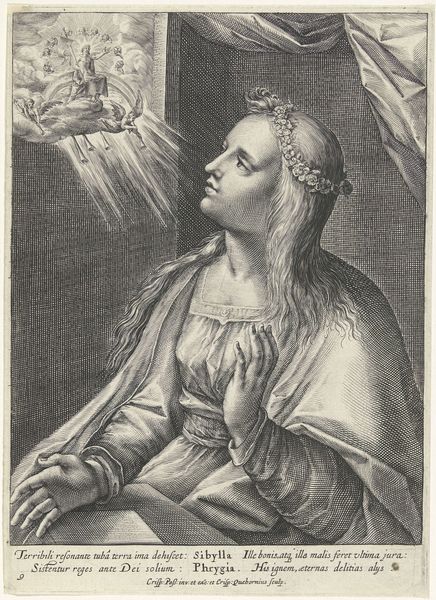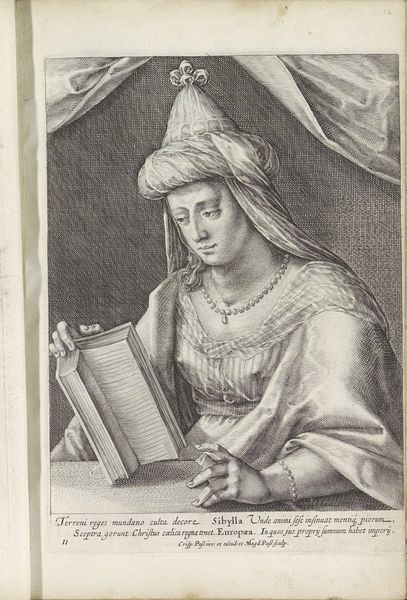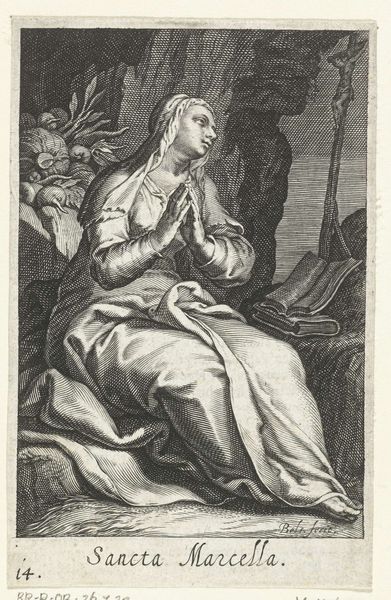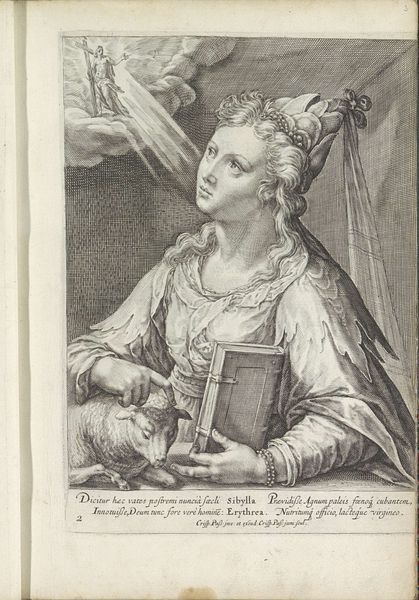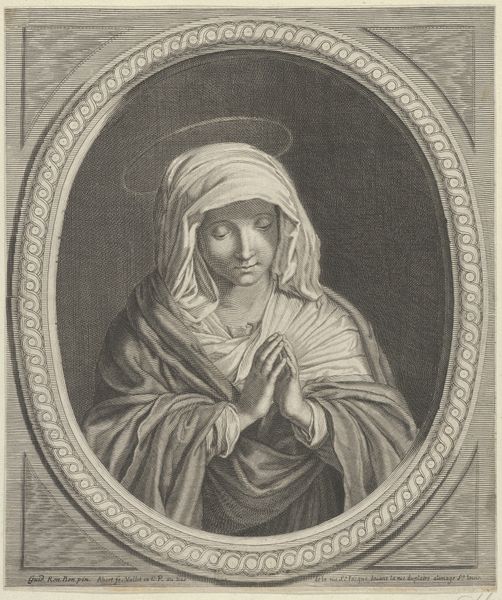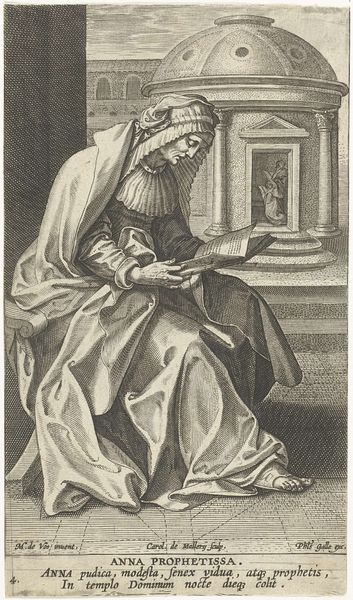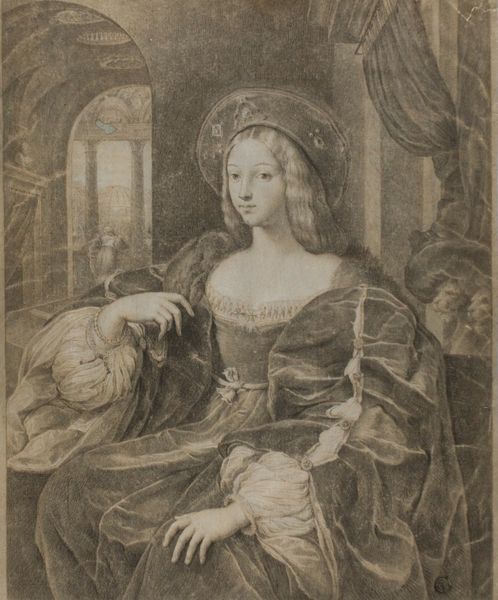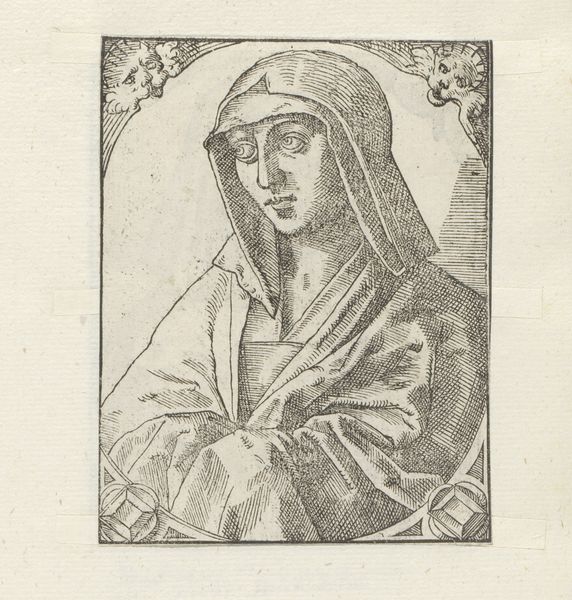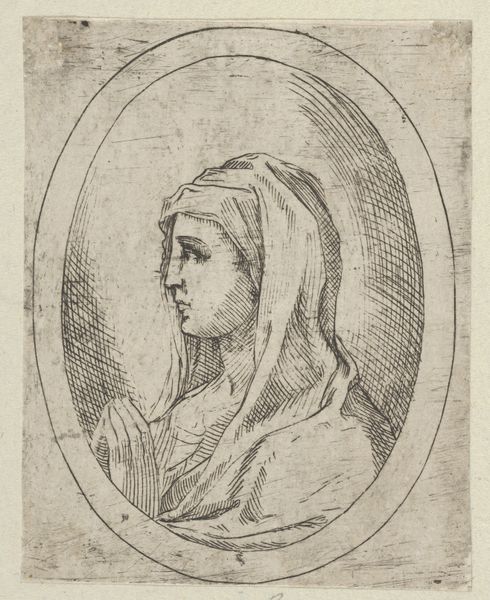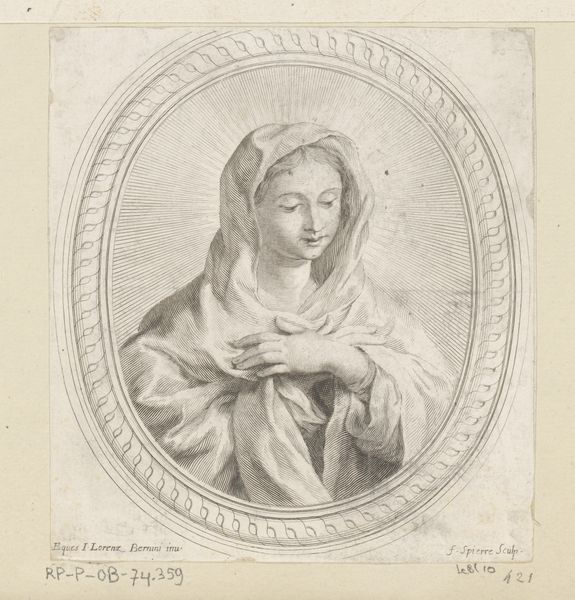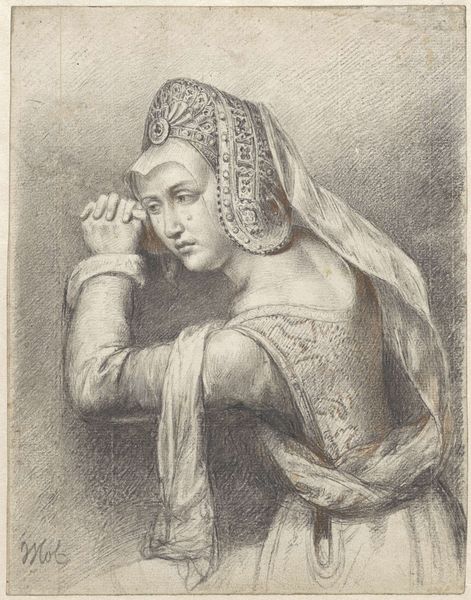
print, engraving
#
portrait
#
baroque
# print
#
figuration
#
engraving
Dimensions: height 266 mm, width 192 mm
Copyright: Rijks Museum: Open Domain
Curator: It’s quite remarkable, isn't it? Here at the Rijksmuseum we have "Cimmerische Sibille," an engraving made around 1615 by Crispijn van de Passe the Younger. Editor: I have to say, my first impression is one of stillness, almost resignation. There’s something incredibly somber about the light and shadows, about her gaze. Is she looking toward the future? Curator: Absolutely. The Sibyls, after all, were Greco-Roman figures gifted with prophetic abilities. They stand as a bridge between the classical world and the burgeoning Christian one, carrying with them layers of cultural memory. Notice how Crispijn has visualized the ethereal candle beside her and, on top of the candle, there is something resembling angel wings that bring forward a more tangible sense of the divine and its potential influence. Editor: It almost feels staged though, doesn’t it? Like she’s posed with these carefully chosen symbols: the book of prophecies open on her lap, the candle shedding light… it’s all a bit too perfect, perhaps too constructed to feel authentically inspired. Curator: But that is part of its charm, the deliberate construction. Crispijn is playing with a well-established visual language. The candle, for example, can be interpreted as a symbol of enlightenment, of divine knowledge illuminating the darkness. And she herself, draped in that heavy cloth, resembles any number of holy women rendered throughout art history. It calls attention to a visual echo between multiple belief systems through history. Editor: I wonder what a contemporary audience would have made of her, you know? The sibyl bridging these different worlds must have been a provocative image. The idea that these pagan women had foreseen the coming of Christ. Curator: Exactly. It allowed people to synthesize different sets of beliefs, to locate Christianity within a grand historical narrative. The sibyls were, in essence, cultural translators. Their imagery persists because their image offered that crucial bridge between old and new belief systems, linking past to present. Editor: That's fascinating. Seeing the past layered into the present—a prophecy written on someone's face. It definitely adds another layer to the initial sense of somber quiet. Thank you! Curator: My pleasure. Understanding how an artist reworks and reinterprets these cultural memories opens up an entire universe.
Comments
No comments
Be the first to comment and join the conversation on the ultimate creative platform.

